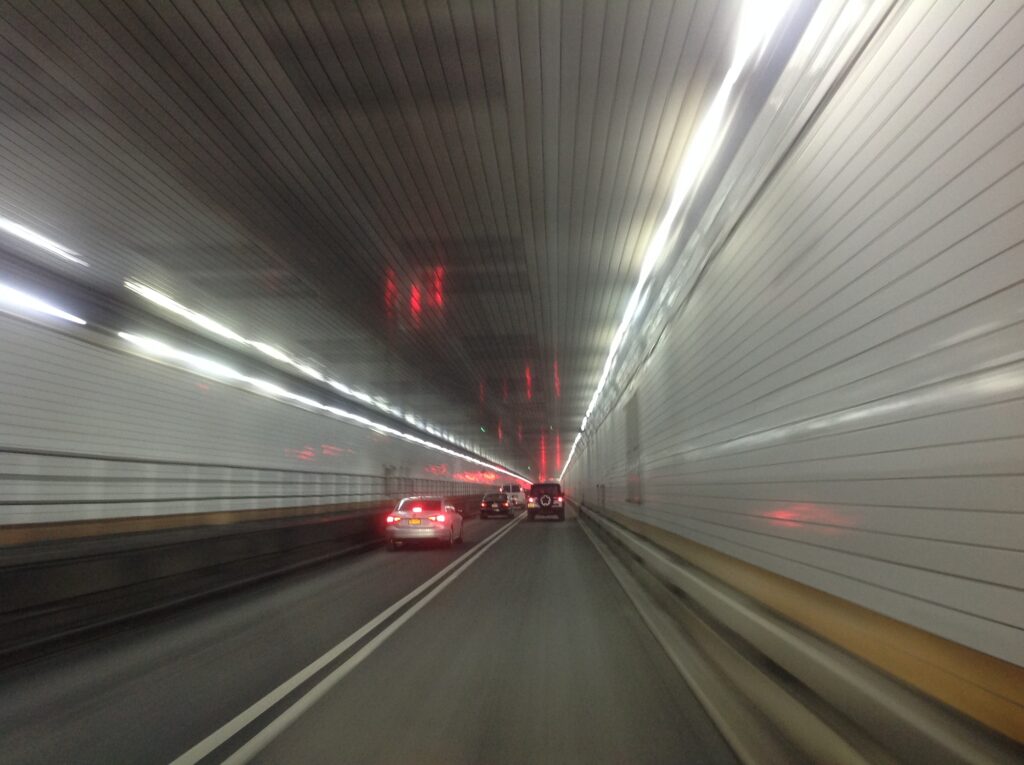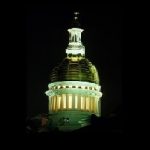The Holland Bungle

New Jersey is, though some other states may not want to admit it, important. The economic well-being of New Jersey is directly tied to the economic well-being of the rest of the United States. As New Jerseyans continue to struggle with affordability issues, further burdening Garden State residents not only harms the hard-working people of this state who contribute to the New York economy, but by extension produces a drag on the greater whole.
New Jersey cannot be subject to unfairly shouldering the cost of New York’s problems when New Jerseyans provide a benefit to the Empire State, crossing the river and contributing their talent and sweat every day. Going over the George Washington Bridge from Fort Lee is an ever-increasing expense, and now with a congestion pricing plan in place, New Jerseyans will have to pay even more to contribute to New York’s economic greatness.
“It looks like the Holland and Lincoln Tunnel will be included but the George Washington Bridge will not be in that and that’s unacceptable,” Governor Murphy told reporters this week regarding the congestion pricing plan being considered. “That’s a double taxation which we can’t envision. So, that needs to be included and I hope somewhere in here, when they whack all this money up, some of it gets invested to relieve the burden that New Jersey commuters have.”
For Governor Murphy, the plan is an insulting black eye. The congestion pricing plan could see New Jerseyans coughing up as much as $23 to enter the city south of 60th Street. This comes on top of tolls, on top of high gas prices, and if you have to pay for parking somewhere in the city, that’s another expense to absorb.
Senator Robert Menendez, speaking alongside Governor Murphy, blasted the plan. “New Jerseyans should not have to pay twice—paying a toll and then paying congestion pricing. New York should not be doing a good part of what they need to do over on the New York side on the backs of New Jerseyans. I strongly stand with the governor. We need to make a very clear message whether it’s the Lincoln Tunnel, the Holland Tunnel, or the GW or any other trans-Hudson crossing. We’re paying big fees and tolls already. We need not pay any more in congestion pricing.”
This is a symptom of a larger situation which needs to be addressed, in part, by the massive 21st Century infrastructure known as the Gateway Project. But readers should also consider the development of New Jersey’s transportation infrastructure in relation to the explosive growth of the state and country. History demonstrates that New Jersey, so often the unfair butt of jokes in the US, is crucial.
By virtue of its geographic position, situated between the Delaware River and the Hudson, New Jersey has always been an essential crossroads. With New York City at one end, and Philadelphia at the other, these two regional heavyweights have anchored the Garden State and defined the cultures of north and south Jersey. As such, New Jersey has also been a conduit for everything imaginable—settlers, immigrants, merchants, soldiers, dreamers, criminals, artists, and more. In the American Revolution, New Jersey was the site of more skirmishes between the rebel and crown forces than any other colony, demonstrating its strategic value. In the early 19th Century, with attention turned towards developing the young state, transportation between Philadelphia and New York was difficult. Poor roads and poor traveling conditions meant it could take a solid day of non-stop travel to traverse New Jersey. Large, heavy goods were best loaded onto ships and sailed around Cape May rather than going overland with wagons. Seeing the need to keep up with the demands of the time, New Jersey was among the very first states in the nation to charter a railroad. About the same time, canals began to be cut into the earth, opening new channels of communication and commerce for the state’s prosperity. Work began on the Delaware and Raritan Canal in 1830 when a charter was granted by the New Jersey legislature. The grueling work was conducted primarily by immigrant labor under harsh conditions, but nevertheless, within 4 years, the canal was complete and connected the rivers whose names it bears. The time and expense to carry goods back and forth between the metropolises had been cut down significantly. Railroads would eventually outpace the canals, but New Jersey’s infrastructure nevertheless was developing to meet the demands of their time.
In 1973, New Jersey’s famous Delaware and Raritan Canal had been added to the National Register of Historic Places, 139 years after it had been opened.
The Hudson & Manhattan Railroad, the first underwater tube transport connecting New Jersey and Manhattan, was opened in 1908 after a difficult start. This would soon prove insufficient for the needs of the time, and aside from this, ferries were the only means by which people and goods could cross the Hudson. The first decades of the 20th Century were spent planning heavily for further infrastructure development. At first, the federal government balked at funding it, but after the First World War, the money finally came. A new, historic phase—an evolution—of Hudsonian transportation infrastructure was dawning.
The Holland Tunnel began construction in 1920 and took seven years to finish and open. That same year, the George Washington Bridge underwent construction, opening in 1931. The Lincoln Tunnel was opened in 1937.
The Holland Tunnel is 103 years old now. It joined the Delaware and Raritan Canal on the National Register of Historic Places in 1993, 66 years after it opened for public service.
In 1920, New Jersey had a population of just over 3 million with 5.6 million people living in New York City. Today, a century later, New Jersey’s population has almost tripled to 8.8 million. New York City today has a nearly equal population to New Jersey. But the tunnels and bridges of the Roaring Twenties and Depression Thirties are still called upon to handle the enormously increased load. The economic exchanges have only grown and expanded, unlike the physical structures which are continually called upon to deliver that growth.
The Gateway Project is the next, natural evolution of New Jersey’s historic development as an economic powerhouse. Where the bridges and tunnels replaced the ferries, and where the railroads replaced the canals, so must new, massive investment in the Gateway augment and improve the infrastructure of our century-old connections. As 2022 came to a close, Congresswoman Mikie Sherrill had announced that just over a quarter of a billion dollars in DOT grants were awarded “for Amtrak to complete critical construction needed to develop the new Hudson River Tunnel between New Jersey and New York.”
Called the Mega Program, it is a product of the Bipartisan Infrastructure bill so hotly fought for by the New Jersey congressional delegation, Congressman Josh Gottheimer among the most vocal supporters. Indeed, Gottheimer even threatened to oppose President Biden’s “Build Back Better” agenda unless the Bipartisan Infrastructure bill was secured. This was too important to let it be even potentially sidelined by politics, although the gatherings of progressivist protestors at his local offices disagreed.
Sherrill described the Gateway Project as “…the nation’s most critical infrastructure project, and this announcement is a long-awaited step in ensuring its completion and subsequent revitalization of New Jersey’s transportation system. By completing the new Hudson Tunnel, we are investing in a stronger economy, more efficient travel throughout the Northeast Region, and improved safety and reduced congestion on our roads for New Jersey families.” Her office warned that billions of dollars’ worth of loss could be incurred if the old tunnels failed. Even a partial closure could lead to plunging property values in New Jersey.
With Governor Murphy and Senator Menendez rightly decrying the additional burdens being placed on New Jersey commuters into New York, one would hope that a broader understanding of the interconnected relationship will prevail while the Gateway Project is slowly starting to become a reality. This next historic phase of trans-Hudson infrastructure is at hand, and this is an opportunity that should likewise call for a new, historic rebalancing of the New Jersey/New York relationship. The frequently penalized New Jersey component of this essential economic partnership must see a better, fairer, and rational approach to New York’s congestion issues, not, as Menendez said, on New Jerseyans’ backs.








Why are the politicians not calling for folks to get out of their cars and use NJ Transit trains and buses for their commutes? Easiest way to avoid tolls, standard and congestion, and parking fees also. Yes, it may take longer than driving and be less flexible, but one can read, snooze, catch up on e-mails, etc., and let the bus driver stress about the traffic, or bypass it on a train.
If the politicians are as worried about climate change as they often say they are, this should be a “no-brainer”.
Because riding New Jersey Transit is a soul crushing and humiliating experience that leads to depression and a deterioration of one’s health. NJT does not respect its rider’s feelings.
Just an observation, why would you call for more people to take trains? Did you even read the article? Our train tunnels into NYC are antiquated. Until Gateway is made the highest priority and completed that solution is not a realistic option.